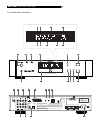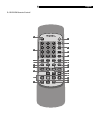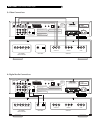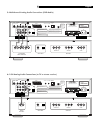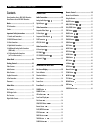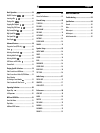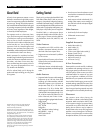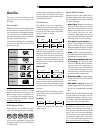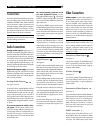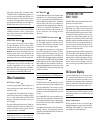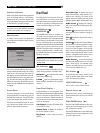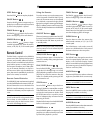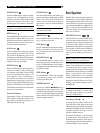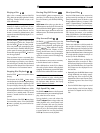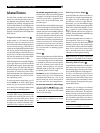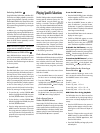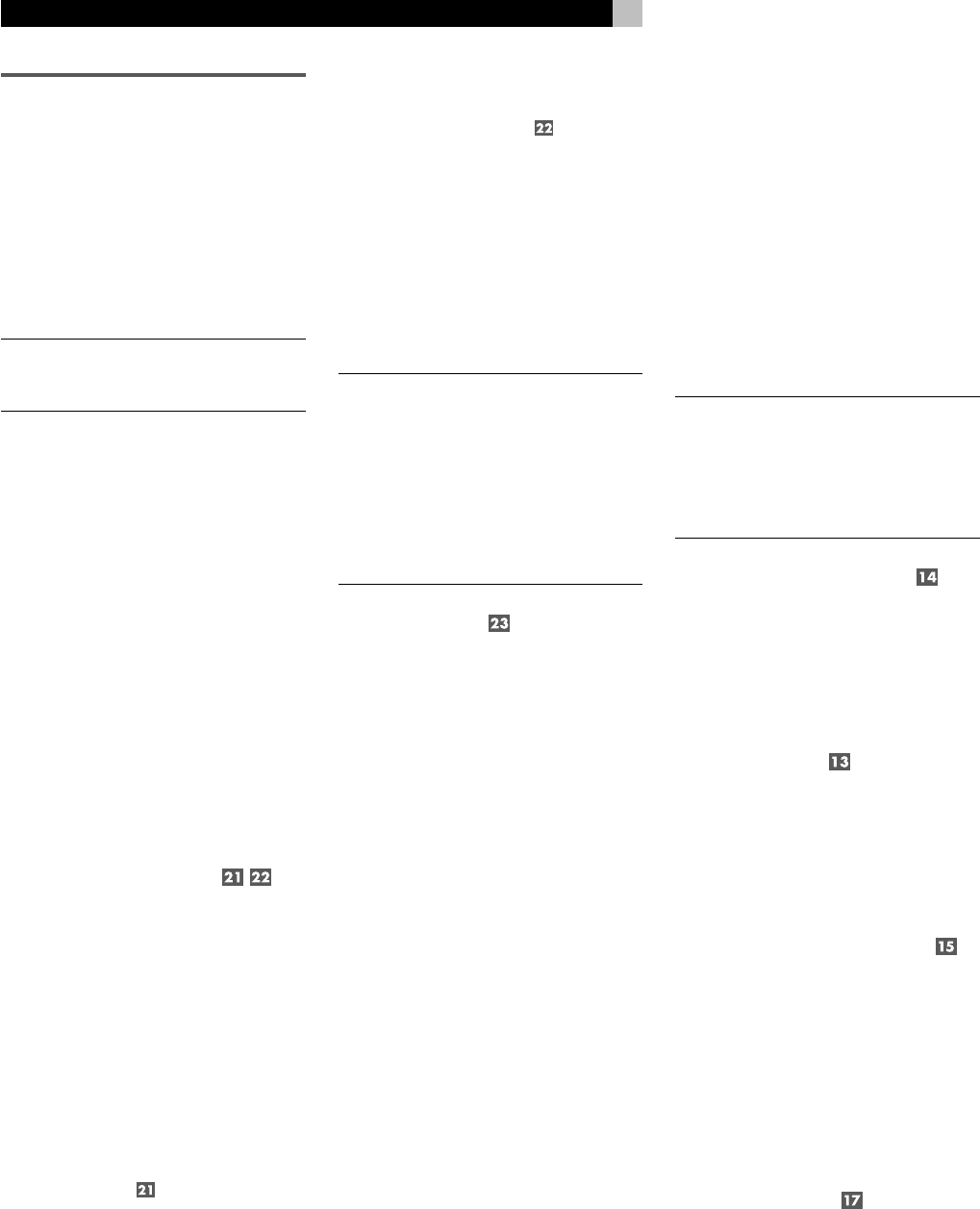
12
Connections
This section describes the back-panel connec-
tions and settings that must be made during
installation of the RDV-1060. These include the
power connection, output connections to the
surround processor, selecting of the video stan-
dard (PAL or NTSC) for your location, 12V Trig-
ger inputs for remote turn-on of the unit, and
optional external IR remote connections.
NOTE
: To prevent loud noises, make sure the
DVD player and the rest of the system is turned
off when making connections.
Audio Connections
Analog audio outputs supply up to 5.1
channels of decoded analog audio. These out-
puts take advantage of the RDV-1060’s abil-
ity to decode many audio formats. Use these
connections when connecting the RDV-1060
to a receiver or TV set that does not have its
own Dolby Digital and DTS decoding, or for
passing multichannel DVD-Audio PCM signals
to the analog inputs of a receiver.
Digital audio outputs supply unprocessed
digital audio signal for use with the surround
processor’s decoding and D/A converters. This
is the preferred option with a Dolby Digital/
DTS surround processor.
Analog Audio Outputs
See Figure 5 and 6
A set of RCA jacks, labeled AUDIO OUTPUT
sends either six channels of decoded analog
audio (front left, front right, rear left, rear right,
center, and subwoofer) or two channels of
analog audio from the RDV-1060 to the ana-
log audio inputs of an audio surround proces-
sor, preamplifier, integrated amplifier, receiver
or TV set.
To a surround processor with 5.1 chan-
nel inputs, use RCA audio cables to con-
nect the six outputs
to the matching multi-
channel input on the surround processor (L to
front left, R to front right, LS to left surround,
RS to right surround, C to center channel, SUB
to subwoofer, etc.)
To a stereo preamp, processor, or TV
set with 2-channel inputs, use the
RDV-1060’s STEREO outputs
. Connect the
STEREO L output to the left audio input of the
TV or receiver and the STEREO R output to the
right audio input.
Typically, the STEREO outputs send a matrix
encoded stereo signal to the surround proces-
sor. See the
Speaker Setup
topic in the
Setup
section of this manual for information on match-
ing the analog output signal to your preamp
or processor.
NOTE
: The analog audio outputs are typically
used only with DVD-Audio discs or with sur-
round processors or TV sets that do not have
Dolby Digital or DTS processing. If your pro-
cessor has Dolby Digital and DTS decoding,
you will not need to make any analog audio
connections to play video DVDs; one digital
connection (described in the following sec-
tion) will suffice.
Digital Outputs
See Figure 4
The RDV-1060 provides digital outputs (with
both optical and coaxial connectors). These
digital outputs provide a digital audio bitstream,
which must be used with a processor that ac-
cepts a digital signal and has its own Dolby
Digital or DTS decoding.
The RDV-1060 provides an optical output and
a coaxial output for the digital audio signal.
Use whichever you prefer. If you choose the
optical connection, remove the plastic cap pro-
tecting the connector and save it for future use.
Connect the appropriate cable (optical or 75
ohm coaxial) from the DIGITAL OUT connec-
tors of RDV-1060 to a digital input on the sur-
round processor.
See the
Audio Setup
topic in the
Setup
sec-
tion of this manual for important information
on matching the digital output signal to your
processor.
Video Connections
Video outputs send the video signal from
the DVD player to the surround processor or
TV set. Three types of video output connec-
tions are provided – RCA composite video,
S-Video, and Component Video. Choose the
type of video output connection that best
matches the inputs on your TV or surround
processor. Component Video or SCART con-
nections must be used with HDTV television
monitors to use the RDV-1060’s progressive
scanning feature.
NOTE
: In most systems, only one video con-
nection need be made. However, there is no
harm in making multiple connection types (for
example, Component Video outputs to an
HDTV and S-Video outputs for use with an
analog TV or VCR).
Composite Video Output
See Figure 3
Connect the composite TV MONITOR
output
to the corresponding composite video
input
on your TV or surround processor, using ap-
propriate video cables.
S-Video Output
See Figure 3
Connect the S-Video TV MONITOR
output
to
the corresponding S-Video
input
on your TV
or surround processor, using an appropriate
S-Video cable.
Component Video Outputs
See Figure 3
Connect the three Component Video TV MONI-
TOR
outputs
to the corresponding Component
Video
inputs
on your TV or surround proces-
sor, using three Component Video cables.
Make sure that you connect the Y output to
the Y input, the P
B output to the PB input, and
the P
R output to the PR input.
SCART connector
The back panel of the RDV-1060 has a 21-
pin SCART connector. This connection is widely
used on TV sets and audio/video equipment
in Europe. The SCART output carries stereo
RDV-1060 DVD Audio/Video Player



